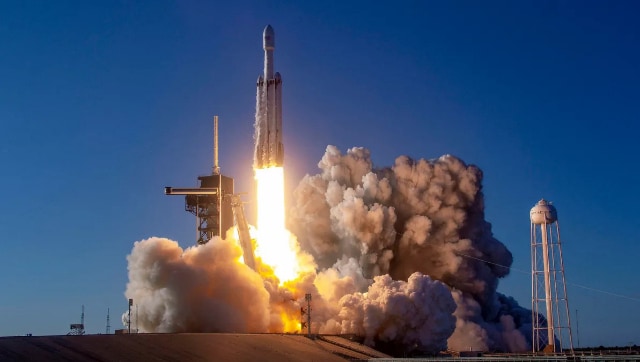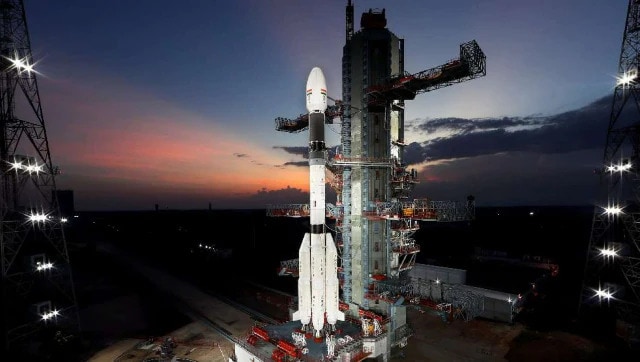New Horizon, New Frontiers: 2022 was a massive year for the space industry. 2023 will be even bigger- Technology News, Firstpost
Mehul Reuben DasDec 23, 2022 11:11:41 IST
Not too long ago, one of the greatest astrophysicists of our generation, Neil de Grasse Tyson, who is a rockstar in his own right, had predicted that by 2050, space travel will be so advanced and so commonplace, that instead of being funded by taxpayers, it will be funded by the tourism and logistics industry. As the year draws to a close, we can say that baby steps to such a future were taken this year. 2022 was a massive year for the global space industry.

We have had so much happening this year – It’s been a remarkable year for SpaceX, with the Space Flight System launch and the return of the Orion spacecraft, major technological breakthroughs, and iSpace’s totally private moon trip. Back home, we had a number of private startups successfully launching their own missions. We even had a startup in India which deployed their own launch station, which would go a long in aiding other space startups.
And yet, there’s a lot to look forward to – in fact, next year may even surpass this one as the largest for the space sector thus far. There are still a lot of unanswered concerns, particularly with regard to the near-term economic picture, continued geopolitical unrest, and some previously indicated timetables that may or may not materialise.
Here’s what 2023 may entail for the global space industry:
The rise of private astronauts
10 years ago, if we spoke about the concept of private citizens, forming a group and travelling to space, people would have called us all sorts of crazy and laughed at us. However, in 2022, four astronauts travelled to the International Space Station on Axiom Space’s Ax-1 mission and approximately 20 people entered suborbital space on Jeff Bezos’ New Shepard rocket from Blue Origin. These figures are only going to increase in 2023.

Axiom will undertake its second private launch to the ISS early next year in addition to Polaris Dawn, the billionaire Jared Isaacson’s private spaceflight programme, launching on its first mission. We already had a bunch of space startups talking about space hotels or privately owned and operated space stations this year. The discussion is only going to get louder on that front. However, don’t anticipate any significant progress until businesses find out how to make the venture profitable and sustainable.
Smaller, but many more launches
While we will be paying attention to the launch of heavy-lift rockets like SpaceX’s Starship and United Launch Alliance’s Vulcan rockets, the focus will primarily be on the n number of smaller and medium-lift launch vehicles with a focus and cheap cost. These include the, the Rocket 4 from Astra, the RS1 from ABL Space Systems, the Terran 1 from Relativity, and a whole other bunch of other startups, too many to count actually. Timelines in the space business are notoriously difficult, but it’s probable that at least a few new rockets will make their first flight next year.
The end goal is to make launches super cheap, to the point where it will be feasible for smaller startups as well to launch slightly heavier payloads to their orbits, on their own, without public funding.
Bridging the communication gap between the Earth and outer space
The SatCom and Earth observation (EO) businesses will be under immense pressure next year as additional big and small satellite constellations are added. Let us take only two examples: Pixxel will launch six high-resolution hyperspectral photography satellites in the second part of this year, and Amazon’s eagerly anticipated Project Kuiper will likely make its maiden launches next year.
We don’t anticipate newer entrants to supplant established firms because most projections indicate that both satcom and EO will have more growth during the decade. But we do believe that, for example, Starlink or sat-to-cell services will be used much more widely here on Earth, and that Earth observation technologies will be even more relevant to understanding climate change and to industries like mining and agriculture. Hopefully, by 2025, we will have the ability to connect two entities closely situated to each other in space, without the need to route the communication through a base station on the Earth.
Revisiting the Moon
We will be ending the year with the ispace’s Mission 1, the world’s first fully privately funded and built moon lander mission. That, however, is only the beginning. Space enthusiasts should be on the lookout out for many more moon landings the next year, albeit small ones. This includes the Blue Ghost and Peregrine landers from Firefly Aerospace and Astrobotic, as well as an expansion of cislunar space infrastructure.

Elon Musk-led SpaceX, will be one company to watch. In 2023, enthusiasts are expecting some major announcements from their dearMoon project, which is financed by Japanese billionaire Yusaku Maezawa. SpaceX may not be able to put a human on Moon in 2023, but it s bound to make great strides in that direction.
Major developments from China and India
While the global headlines have been taken up by European and American startups, the Indian space industry has made some seriously impressive strides, and so has the Chinese space industry. A
China completed their very own space station, the Tiangong space station, this year, becoming the first country to do so. Plus, they have a bunch of experiments lined up. Naturally, their presence in space this year will huge in 2023.
India on the other hand saw several startups stepping upto the plate and launch their services. The most significant of these has to be Skyroot Aerospace’s privately developed rocket, the Vikram-S. It was the first privately developed and built rocket in India.

Another significant development this year was the Agnikul launchpad (ALP) and the Agnikul mission control centre (AMCC) the two parts of a privately built launch facility.
For 2023, we will have many much more of these launches and unveilings by startups in India. On top of that, ISRO has a bunch of space missions scheduled for this year. These include the Aditya-L1 solar observation mission, the Chandrayaan-3 lunar mission, and the flight test of the Gaganyaan 1 and Gaganyaan 2 missions.
India can potentially play a key role as space travel and perhaps space tourism becomes more mainstream. Indian space programs are much more cost-effective than their European and American counterparts, something which gives us a major advantage in making space travel affordable and more importantly, financially sustainable.
For all the latest Technology News Click Here
For the latest news and updates, follow us on Google News.
